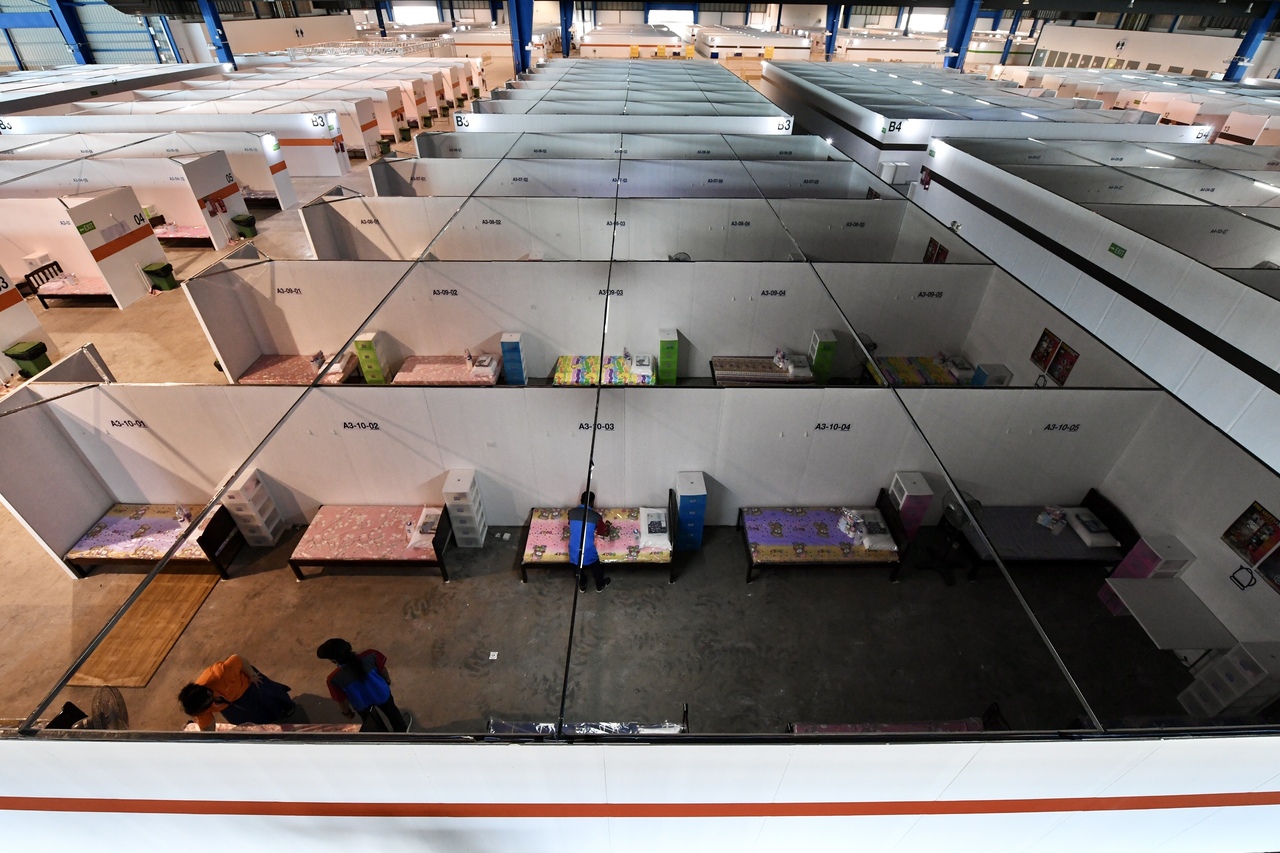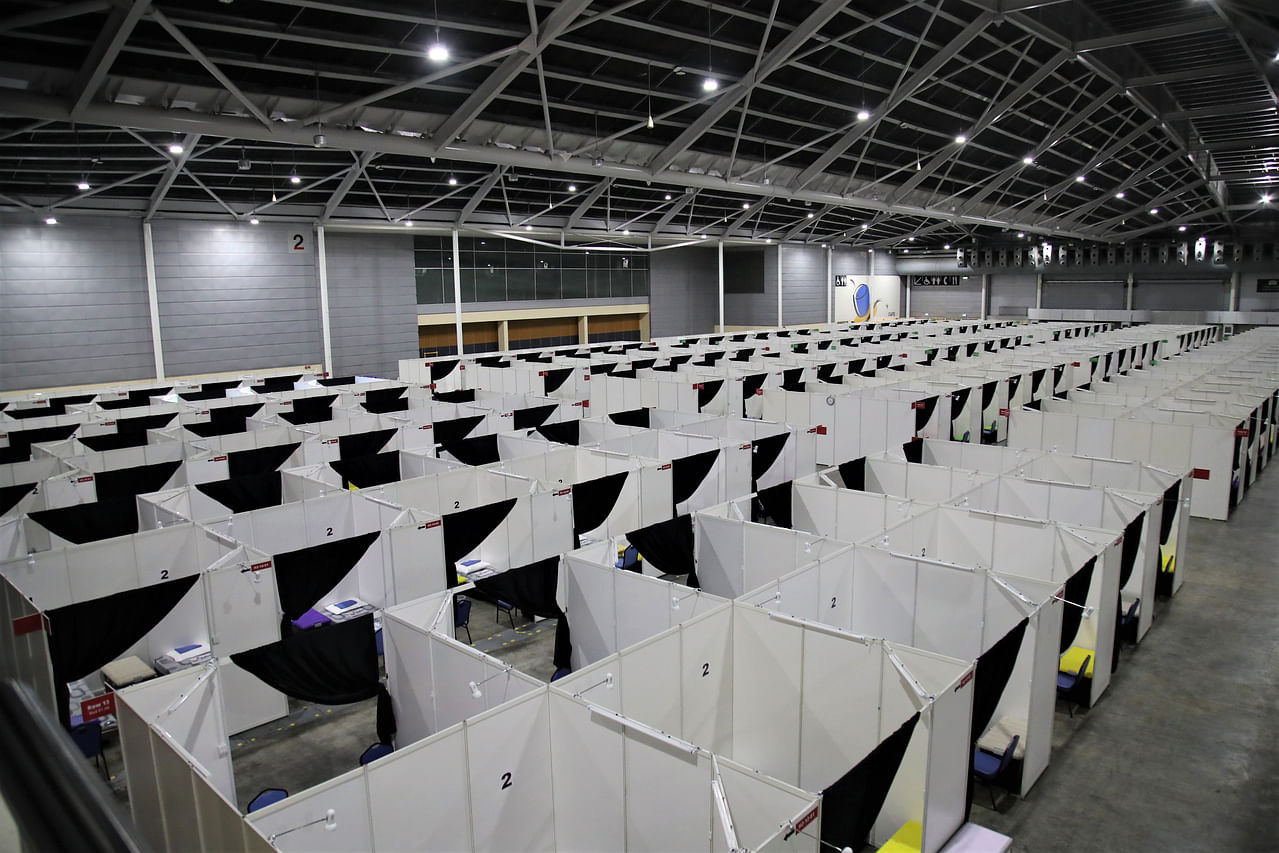Community care facilities for Covid-19 patients with mild symptoms will double bed capacity to 20,000 by end-June
Sign up now: Get ST's newsletters delivered to your inbox

The community isolation facility at the Changi Exhibition Centre.
ST PHOTO: DESMOND FOO
Timothy Goh, Lim Min Zhang
Follow topic:
SINGAPORE - Healthcare facilities for Covid-19 patients outside of hospitals will be ramped up by the end of June, as Singapore prepares to handle an increase in the number of confirmed cases.
Bed spaces at community care facilities, which are meant for those with mild symptoms and lower risk factors, is targeted to be doubled to 20,000 by the end of June, said the Singapore Armed Forces' (SAF) director of joint operations, Brigadier-General David Neo.
He was speaking at a media briefing on Tuesday (April 28).
There are currently 10,000 bed spaces at places like D'Resort NTUC chalet in Pasir Ris, Halls 1-6 at the Singapore Expo, and Changi Exhibition Centre.
These places were set up to handle patients very quickly, said BG Neo, who noted that the Singapore Expo was ready within a week, and the Changi Exhibition Centre in two weeks.
Community recovery facilities, meant for patients who remain well at the end of their 14th day of illness and who do not require further medical care, will also be expanded to more than 10,000 bed spaces by the end of June. Currently, there are 2,000 bed spaces for this purpose, mainly in SAF camps, said BG Neo.
Patients will be isolated at these facilities before being assessed for discharge.
In total, there are currently more than 18,000 bed spaces for isolation and care needs, with another 23,000 in the pipeline, said BG Neo.
As of Monday, Singapore had 14,423 confirmed coronavirus cases, with 1,431 patients in general wards, 20 in intensive care units, and 11,863 in isolation facilities, such as at private and community hospitals.
Giving an overview of how Singapore was managing Covid-19 patients, Health Ministry director of medical services Kenneth Mak, who was also at the briefing, said that the treatment provided is matched to the patient's needs.
"As the majority of them have relatively mild clinical course, there's usually no need for much treatment to be provided. About 30 per cent of patients require more medical observation, and that was often to their underlying health conditions. And these are the ones that may get admitted into hospital," he said.
Those who were admitted in the hospitals rather than community care facilities would generally be those who first present more serious symptoms, he said, or those with risk factors, such as advanced age or other medical conditions.
He added that those who remain well after the first 14 days of illness have been found to be very likely to remain clinically stable, and they may not require intense clinical care. "As a result, these recovering patients may then be transferred to further facilities we have, where they may continue to be cared for and kept separate from other healthy individuals, until such a stage where we have deemed them fully recovered and ready for discharge," he said.
Associate Professor Mak added that a number of initiatives are in place, such as the SG Healthcare Corps launched on April 7, to meet the need for manpower to support the expanded healthcare facilities.
So far, 3,000 healthcare professionals across all job and age groups have signed up, and they include those from the private sector, and former and non-practising staff.

The community isolation facility at the Singapore Expo.
PHOTO: MINDEF
The initiative will be expanded to include more healthcare and non-healthcare professionals, said Prof Mak.
"We continue to work with them and invite many other healthcare professionals to step up and join in this particular initiative," he said, adding that matching is currently ongoing for those who have already signed up, and that training will be provided for them.
Some roles include forming swab testing teams that expand the capabilities of medical teams deployed at foreign worker dormitories, he added.
Permanent Secretary for Health Ng How Yue, who chaired the briefing, said that the right way to deal with the virus effectively was involving both public and private organisations, as well as volunteers.
"We appreciate all these contributions from all who have been working hard. Some of them have worked around the clock, and it's through these combined efforts that we can take care of our patients promptly and appropriately in a sustainble way," he said.

